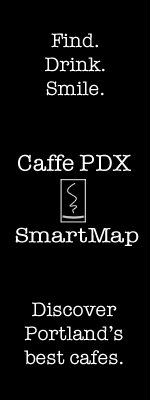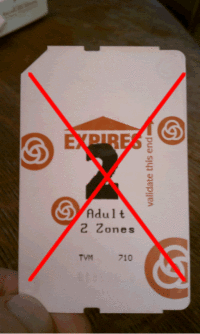Kobos Coffee (Part 2) - How Kobos came to PDX
 Thursday, May 26, 2011 at 3:42PM
Thursday, May 26, 2011 at 3:42PM [Part 1 of this history can be found here]
Originally from Massachusetts, David Kobos spent many of his years growing up in New York. The pursuit of higher education eventually led him out West, and he spent four years getting a master’s degree from Reed College. After graduating, he taught in Milwaukie for a couple years. During this time, Kobos used to stop in and get coffee from Boyd’s Little Red Wagon.
“That's how I got started drinking real coffee," he said.
After his time in Milwaukie, Kobos moved back to New York, where he got a job as a teacher at a school in the Lower East Side (of Manhattan). In his free time, he began exploring restaurants in Chinatown and Little Italy, which were both nearby the school. He became fascinated with the city’s food and coffee culture and began visiting the shops of the Lower West Side too, where the Shapiro Brothers and the McNulty family were famous for roasting coffee.
At some point during his culinary explorations, Kobos met his future wife and got married. The couple went on a honeymoon to the Pacific Northwest and then returned to the Big Apple. Together, they really got into exploring restaurants. His wife was a good cook, he said, so they began to shop at higher-quality markets, trying to duplicate at home what they had been tasting in restaurants. The couple also drank plenty of coffee and visited all of New York’s famous cafés.
Kobos recalled some of the smells in the neighborhoods where the stores roasted their own coffee:
"There was this one little Italian roaster, down in Little Italy, who used to take one kind of coffee and just burn the hell out of it. You could smell it if you went anywhere near that place,” he said, laughing.
Eventually, the Kobos and his wife decided they needed a change of scenery. Remembering the beauty of the Pacific Northwest, they decided to move across the country to Portland, where they would indulge their love of food and coffee by starting a cookware and coffee retail store (and a family). It was a lot of change in a short amount of time, and their friends were skeptical.
“’You’re doing what?’—that’s what they asked us. They thought we were crazy,” Kobos said, recalling the reactions of his friends and family. “You’ve got a job already. Why would you want to do that?”
Undeterred, the couple moved forward with their plans. However, plans soon changed. The original plan was to ask Boyd’s Coffee to roast coffee beans for Kobos to sell in the store, but when David asked them, they turned him down. It was a pivotal moment for the Kobos story.



